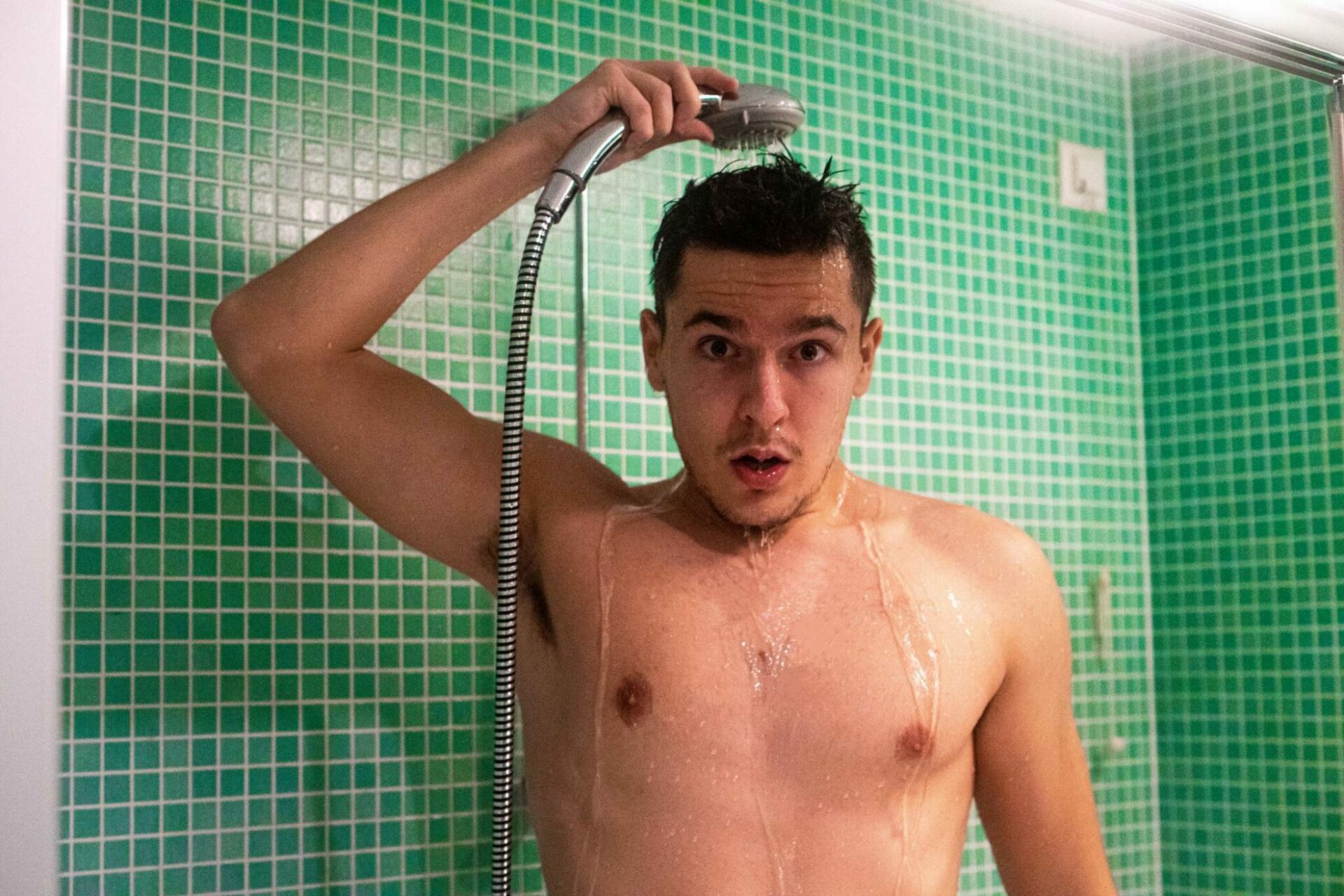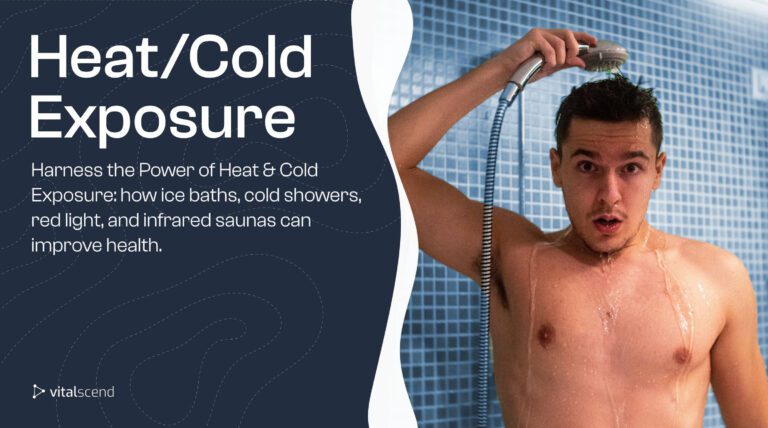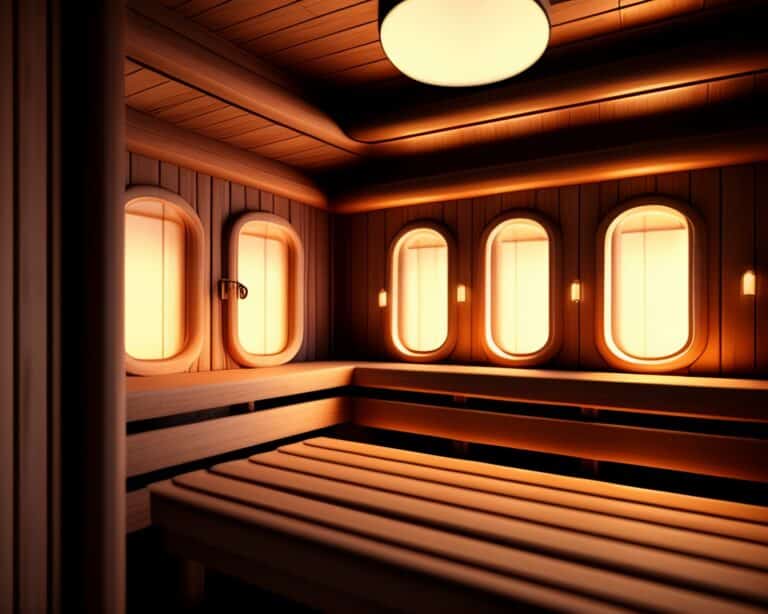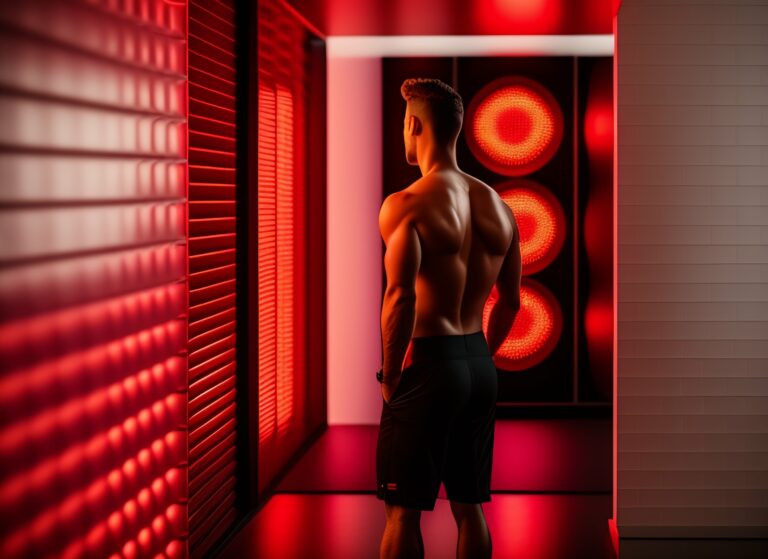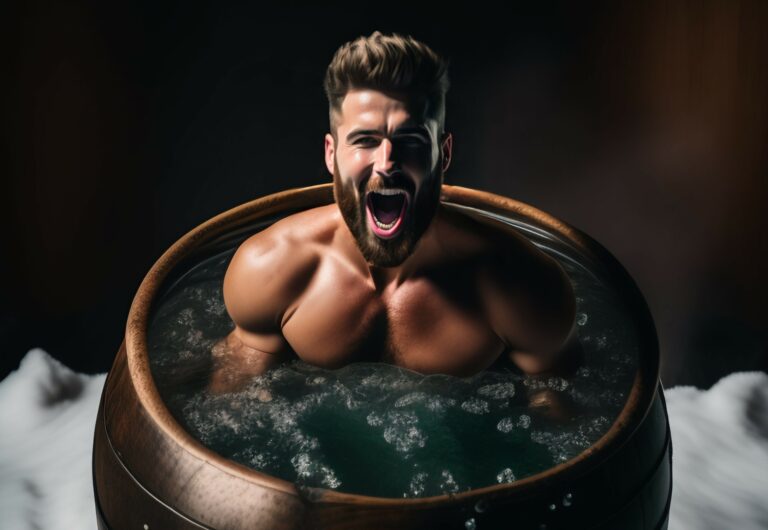6 Reasons Why Cold Showers Are Good For You | 16 Studies
You’ve probably heard cold showers are good for you, but is it true? Cold showers became quite hot these days, easy to say, it’s a trend. But science also agrees with many benefits of cold exposure, especially for immune function, cognition, recovery, metabolism, and alertness. So let’s see what’s all the fuss about and explore cold shower benefits.
The Art of Cold Exposure
There is no shortage of cold exposure methods presented today. The narrative goes that exposing yourself to cold comes with numerous benefits like cardiovascular and metabolic health, improved circulation, faster metabolism, mood elevation, better immunity, etc.
Cold exposure has been around for years. It goes without saying, longer cold exposure which your body can’t fight against will lead to hypothermia and have negative side effects. Many soldiers have suffered terrible cold injuries and effects due to cold weather operations. (1)
The way we look at cold exposure today is different. Why? Because we aim to strategically use cold weather to stimulate adaptation which makes us more resilient to stress and cold. As with fasting, not eating foods for a long duration will degrade vital tissues in the body. But short-term or intermittent fasting can actually improve hormonal balance, alertness and remove dysfunctional cells by stimulating autophagy.
Strategic use of cold exposure is said to have many potential benefits. We are seeing growth in the use of different cold exposure methods, like cryotherapy, cold baths or plunges, cold shower, and even exposure to cold climates.
Before we aim to explore how cold showers may improve your health, you should be aware of one thing: Most of the research is done on cold exposure which might not necessarily translate to a quick 60 sec. cold rinse we perform. However, it’s good to know how cold can affect us aye?
What are Cold Showers?
Cold shower is a term that describes showering with water of around 60-70 Fahrenheit or 15.5-21 Celsius degrees.
Yes, I know, it’s cold, uncomfortable and hard to even think about. The good news is, you feel way better afterward, plus you can adapt with time to withstand more stress or cold stress I should say.
When you jump in the cold shower there is a myriad of reactions happening in your body. Your heart rate increases, stress hormones like noradrenaline and epinephrine are secreted, and your breathing patterns are faster, forcing deeper inhales. Once cold water touches your skin, the peripheral skin neurons detects cold and stimulates all these effects to produce more energy and heat, to sustain survival.
The idea of cold exposure (or showers) is that strategically exposing ourselves to short bursts of such stressors will result in an adaptation that favors a stronger, more resilient body.
Are cold showers good for you?
It is individual. Research shows that cold showers have numerous benefits from improving circulation, boosting immune system, promoting alertness and enhancing fat-loss. As with anything, you don’t want to overdo it.
Why are cold showers good for your skin?
Cold water can constrict blood vessels that tightens pores and acutely reduces redness. It also doesn’t mess with the natural oils on your skin, as hot water.
What do cold showers do to your brain?
Cold showers are great for promoting alertness as they are increasing brain oxygenation, through improving circulation and forcing deeper breathing. Cold also stimulates the sympathetic nervous system and increases epinephrine secretion, helping with brain activation.

Hormetic Stress and Adaptation
The main idea behind cold exposure is stimulating hormesis. Hormesis is an evolutionary phenomenon by which we can adapt and survive. It stimulates adaptation in our bodies, to make us stronger. (2) (3)
Hormesis happens when harmful stressors like cold are presented in small amounts, so our bodies can adapt and become more resilient, would cold ever hit us again (which it will unless you live in California) we’ll be better equipped to face it.
Hormetic stress is a dose-response, strategic stress present in low doses which can stimulate adaptation to withstand higher doses, otherwise harmful.
Think of exercise, is it good to lift weights or run? During the activity, your body breaks down energy, it tears the muscle down, stresses out your cartilage and joints, increases inflammation in the blood, etc. So why is it healthy?
Because low-dose exercise, which we do, adapts our muscles, our lungs, and our nervous system to better fight resistance, to withstand pressure, to cover a longer distance, hence improving longevity and resiliency. Exercising for eternity, with no rest will deteriorate us sooner or later.
Fun Fact
The goal of cold exposure is to provide low-dose stressors (cold in this case) which will stimulate an adaptation in our bodies, making them more resilient to higher doses of cold. This mechanism is hormesis, and the stress is called hermetic stress.
3 Ways To Do Cold Showers
Once you’re impressed with all the potential benefits cold showers may promote, you are eager to jump in the shower, but wait a bit. There are three ways of doing cold showers, and many people overestimate their ability to tolerate cold in the beginning.
Jumping straight into cold water can shock your system, and in some cases be even more beneficial. It makes you breathe faster, take deeper inhales, and it speeds up your heart rate. Here are the three ways:
- The Heroic Way – or as I like to call it the-uncomfortable-way will be pretty uncomfortable. Especially if you’re showering in the morning, when you’re body isn’t warmed up. Feels like freezing, and you need a lot of discipline to do it.
- The Bitch Way (my choice) – or as I’d like to call it my-way is starting the shower pretty warm, as you’d normally do. Washing your hair, slowly putting shampoo on your body, enjoying your life. Then as you approach the end, it’s way more comfortable to switch to cold water since it feels like refreshment.
- The Shock Way – also known as the hot-cold-hot-cold shower. Here, we switch from hot to cold water, popularly known as contrast therapy. This is known to promote the benefits of both hot and cold showers, as cold improves resilience, immunity, reduces inflammation, and boosts alertness while hot relaxes you, improves circulation, and reduces stress.
Disclaimer: Cold exposure can have a detrimental effect on one’s health. Some people aren’t resilient enough to withstand the shock of cold, which may lead to unwanted events or side effects. Longer cold exposure also can lead to hypothermia, where your body can’t produce enough energy or heat to warm you, which might be deadly in severe cold and later phases. Always consult your doctor before trying any cold exposure method, and get proper guidance from an expert.
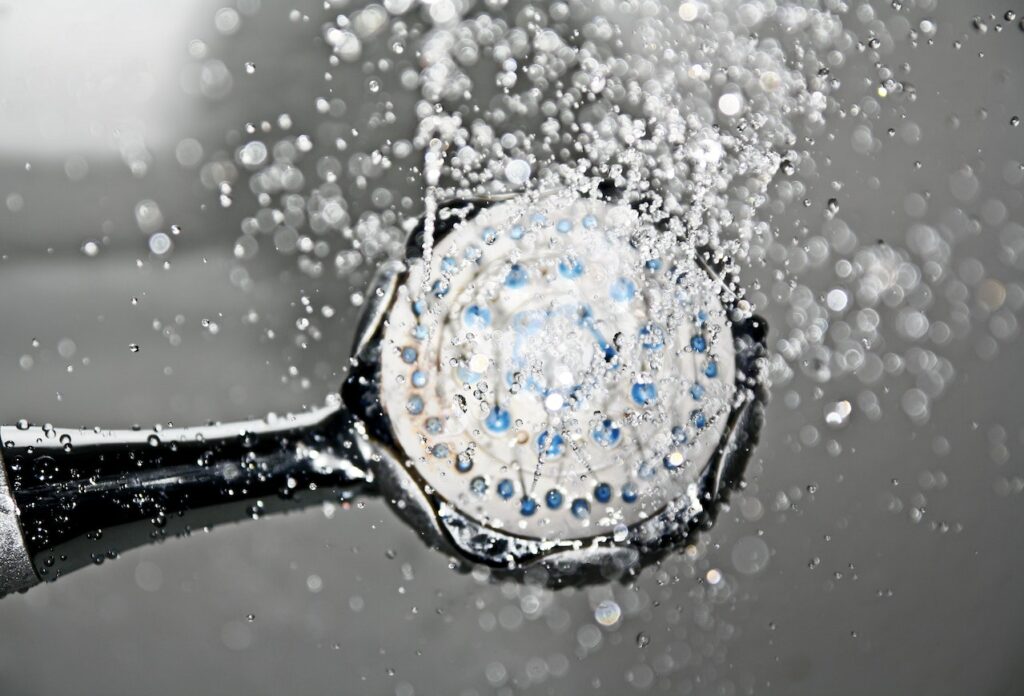
6 Reasons Why Cold Showers Are Good For You
Enough with the chit-chat, let’s see some of the potential, research-backed benefits of cold exposure and cold showers. Many of these benefits have underlying physiological mechanisms, for which you might want to check the research provided in each section. Enjoy!
1. May Improve Circulation and Cardiovascular Health
One of the main benefits of cold exposure and cold showers is improving circulation. While it may seem counterintuitive because cold causes vasoconstriction (decreasing blood vessel diameter) it actually seems to help with circulation.
Cold exposure can increase norepinephrine by a whopping 200-300%. Norepinephrine is a neurotransmitter involved in stress and blood circulation. It increases heart rate, stimulates energy creation, and breaks down fat, putting you in the fight-or-flight response.
The body must find its own way to create heat, to warm you up during the cold shower. For this, its ability to produce energy increases acutely.
Cold exposure may increase Nitric Oxide, an important molecule involved in vasodilation that increases the diameter of your blood vessels. This means NO can improve circulation, letting more blood, nutrients, and oxygen travel through. It has been shown that by increasing norepinephrine, we can stimulate NO production in brown fat, which can increase blood flow in that area. (4)
The great stimulator of Nitric oxide is endothelial nitric oxide synthase or eNOS. Temperature changes at 37 C and 28 C lead to an increase in eNOS activation. It’s fair to note, that at a lower temperature of 4 C, there was a decrease in eNOS. (5)
2. Boosts Immunity, May Aid in Disease Prevention
The most popular benefit of cold exposure is boosting immunity. It sounds counterintuitive that what makes you sick (or causes cold and flu) can make you be more resilient to it. But if you go back and re-read our hormesis theory and hermetic stress effect, a strategical short-term cold application might actually be very beneficial.
There are numerous cells in the body that work to support our health and fight disease, these are the stars of our immune system. You’ve probably heard of these defenders: t-cells, leukocytes, monocytes, and lymphocytes
- Cold water immersion at 14 C had profound positive effects on increasing the proportions of monocytes and lymphocytes. After 6 weeks of continual immersion in young men lead to an increase in T suppressor cells, activated T and B lymphocytes, and T helper cells too. (5)
- This data can suggest that cold exposure induces a stress response that increases catecholamines in the blood, activating the immune system. Cold exposure increased norepinephrine and natural killer cell count and activity. (6)
- If this wasn’t enough, the well-known study on cold showers’ effect on disease in 2015, shows that participants who took cold showers in the Netherlands had reduced their absence from work due to sickness by 29%. (7)
3. Increases Alertness and Elevates Cognition
It seems like cold showers, cold exposure, or even taping your neck with cold water can immediately have an acute effect of increasing alertness. Will this make you way smarter? No, but it will make you more alert, focused, and sharper.
When you get in contact with cold water, a fight-or-flight response is activated in your body. Your breathing speeds up, heart rate goes up, adrenaline releases.
As we inhale deeper and exhale fully, more CO2 leaves our brains. Along with improved circulation, our brain gets more nutrients and oxygen. Although acutely cognitive tasks might not be better during cold exposure, it stresses our body to become more resilient and potentially perform better in the long run.
This study investigated the effect of cold water topical application on 24 healthy elderly participants (just 1 man), who were split into two groups. It showed beneficial effects on cognitive function in the elderly population. (8)
4. Potential Mood Elevation, Stimulates Endorphins
The idea that cold exposure or showers can reduce depressive symptoms or stress lies in the simple stimulatory and stress-resilience mechanism we mentioned.
The hypothesis on cold showers for depression states that cold exposure can activate the sympathetic nervous system and increase beta-endorphins, also known as the “good-feeling” chemicals.
Sending a lot of electrical impulses from the peripheral skin (sensory) neurons to the brain, which happens when cold water hits your skin, can have a potent anti-depressive effect. The proposed dose is 2-3 minutes of 20 C cold showers with a 5-minute gradual adaptation. (9)
Stress causes inflammation, that’s clear. When inflammation is present, there’s oxidative damage. In such state, our body is more prone to anxiety and stress symptoms, which are linked to inflammation (yap, you noticed a pattern). By reducing inflammation we can theoretically defend ourselves from stressors and become more resilient.
It’s known that cold exposure can stimulate deep breathing. As shown in ScienceDaily shallow breathing makes stress and anxiety symptoms worst, hence why breathing may be effective for cognitive therapies. Deep breathing has also been linked to reduced activity of panic receptors too.
5. Anti-Inflammatory Properties, Recovery, and Regeneration
Unless you’ve been living under a rock, you’ve seen athletes jumping into a cold plunge. Not so enjoyable, is it? But it seems like the benefits are pretty impressive.
It is no secret that cold fights inflammation. It increases the activity of the sympathetic nervous system, activating catecholamines, and increasing epinephrine. This can increase anti-inflammatory mediators and inhibit pro-inflammatory cytokines. (10)
There’s an interesting study Wim Hof’s webpage links to, associated with regeneration and anti-inflammatory properties of cold. It seems that cold exposure in healthy males was associated with the activation of the Cori cycle (pointed out by higher levels of lactate and pyruvate. This increases anti-inflammatory interleukin or IL-10 and reduces the pro-inflammatory IL-6. (11)
In people with chronic rheumatic spine inflammation, a training program that involved breathing, cold exposure, and meditation was shown to reduce markers of inflammation like CRP (C-reactive protein) and EST, improving their quality of life. (12)
Info: Cori Cycle is a well-known process that plays a major part in our energy metabolism. It converts lactate to glucose in the liver, allowing its release in the blood, follower by an uptake (of glucose) by muscles, cells, and tissues in the body. It then converts glucose to lactate by anaerobic glycolysis in skeletal muscle.
However, before you jump into that cold plunge, you might want to wait a little bit. Yes, I said it, and here’s why. Your body naturally fights agains inflammation after a good training session. You need to become inflamed, to adapt.
While cold exposure or cold plunges reduce inflammation, it is good to let the body rest and cool off naturally for some period. After that, to reduce chronic inflammation and prevent overtraining, good steps for recovery would include sufficient rest, stretching, cold exposure, balanced meal (protein up), fluids, and massage. (13)
6. May Speed Up Metabolism and Aid in Fat-Loss
Metabolism is the way your body converts food to energy. It’s much more complex than that, but simply put, faster metabolism will convert food to energy faster. Why is this good? You’ll have more energy, and burn more food, meaning less fat accumulation.
Research shows that immersion in hot water of 32 C degrees leads to relaxation. Who would’ve thought? Do you know why we like them hot baths aye? The warm water didn’t change metabolic rate and it lowered heart rate by 15%, and blood pressure by 11-12%. Guess what cold water immersion did? At 14 C it increased metabolic rate by 350%! It also increased noradrenaline by 530% and dopamine by 250%. That says enough. In my book, that’s impressive. (14)
Another factor is, brown fat. Brown fat is the fat that helps you produce energy, thus evaporating heat. It helps you stay warm, and it has many more mitochondria than white fat. It is more metabolically active, burns more calories, and helps us shred excess fat.
This is a way humans adapt to cold climates. Many people living in the northern countries at lower temperatures are known to create more brown fat, so they can generate heat better. If you’re used to warm temperatures only, you aren’t that cold resilient, hence why you can’t stand cold showers that much.
As posted at ScienceDaily, cold exposure can stimulate the growth of brown fat. It seems like the adaptation to cold is what partially leads to a faster metabolism, which consequentially leads to more energy creation and burning fat more efficiently.
conclusion
Cold showers are showers with water at lower temperatures of 60-70 F (15.5-21 C). Cold showers or cold exposure can have a profound effect on one’s health, stress resilience, and metabolism. Cold showers are known to boost metabolism and aid fat loss, boost immunity, reduce inflammation and improve recovery, elevate mood, and improve alertness, circulation, and cardiovascular health. It works by stimulating hormesis, providing low-dose hormetic stress which stimulates adaptation, making you more stress resilient. This puts your body in a better state to fight against physiological and psychological stressors, while also improving oxygenation.
Frequently Asked Questions
What happens when you take cold showers?
Your body is shocked, so it starts producing energy to keep you warm, seeking survival. This causes hormesis, or an adaptation that makes your body more resilient to stress and cold. Your heart rate goes up, you breathe in deeper and faster, you reduce the level of CO2 in your brain.
Can cold showers make you sick?
Excessive cold or longer cold exposure can make you sick and lead to hypothermia. The idea of cold showers is to strategically apply hormetic stress (low dose) so we can adapt to be more resilient.
Can cold showers help to burn fat or lose weight?
Yes, one of the potent benfits of cold showers is fat-loss. It happens by boosting your metabolism, increasing endorphin release and stimulating brown fat genesis. Brown fat is more metabolically active, meaning it burns more calories to produce energy (or heat).
Can a cold shower boost the immune system?
Yes, by stimulating hormesis. That is your body’s adaptation to the stressor, in this case cold water (cold exposure). It increases the amount of anti-inflammatory and disease fighting cells like T-cells and B-lymphocytes.
Cold showers vs. Hot showers, which one is better?
Both have their benefits. Hot showers are known to improve circulation and cause vasodilation, reduce heart rate speed and blood pressure. Cold showers are more known for their immuno-stimulatory and alertness promoting properties. Check contrast therapy topics if you’re interested in mixing them.
Can cold showers boost testosterone?
In general colder climates or cold exposure may improve sperm production. However, there is no direct scientific link between higher testosterone and cold showers, yet.

